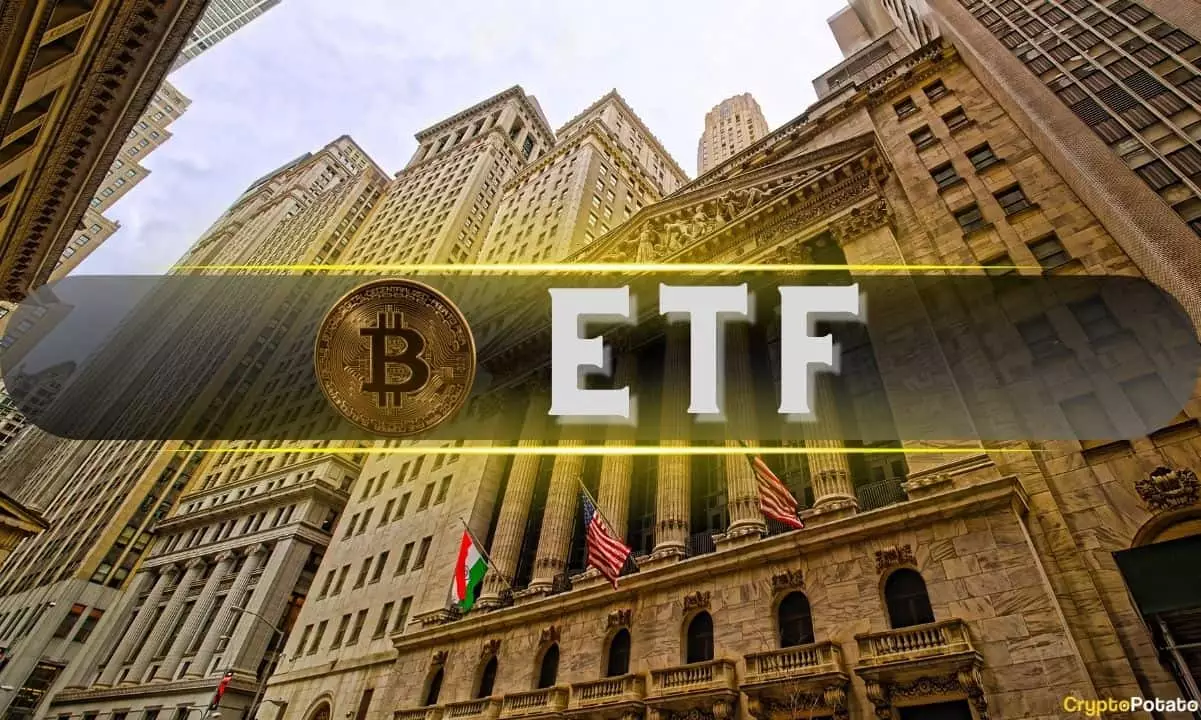In an alarming turn of events, the U.S. spot Bitcoin exchange-traded fund (ETF) market has experienced an unprecedented exodus of capital, recording its largest single-day outflow of nearly $938 million. This staggering figure occurred on February 25, coinciding with a significant drop in Bitcoin’s price, which fell below the critical threshold of $87,000, marking its lowest value since mid-November. Data highlights a concerning trend: almost every Bitcoin ETF based in the U.S. faced outflows on this day, signaling a widespread lack of confidence among investors.
Among the various ETFs, Fidelity’s FBTC suffered the most with outflows reaching $344.7 million—its highest since inception over a year ago. Such a drastic withdrawal raises questions about investor sentiment towards Bitcoin and the effectiveness of these instruments as safe havens. Following closely was BlackRock’s IBIT, which saw departures of $164.4 million, a reflection of the persistent bearish trend engulfing the market. Bitwise’s BITB reported the third-largest outflow of $88.3 million, contributing to a bleak picture of investor behavior in the current market environment.
The downward trend was not isolated, as ETFs like Franklin Templeton’s EZBC and Grayscale’s GBTC reported combined withdrawals that further illustrated investor trepidation. Successive days of negative flows indicate a looming crisis for Bitcoin ETFs, with comparable patterns observed on February 24, suggesting that this outflow wasn’t just an anomaly but part of a larger bearish wave.
February has proven to be particularly devastating for Bitcoin ETFs, with the total outflow exceeding $3 billion, marking it as the worst month since these investment vehicles were launched in early 2025. The statistics reveal that between February 6 and 25, there were only two days of net positive inflows, a stark contrast to the overwhelming outflows dominating the month. This drop amplifies the concerns regarding institutional demand for Bitcoin and its derivatives, suggesting a pervasive hesitance among investors.
The reluctance to invest may be driven by broader macroeconomic factors and shifting market conditions. As traditional market indices exhibit volatility and inflation remains a concern, investors are adopting a more cautious approach to cryptocurrencies. Such hesitance is not without consequence, as the cryptocurrencies’ once-prominent status appears to be diminishing in the eyes of institutional investors.
This lack of bullish sentiment reflects a fundamental shift in market dynamics, reinforcing the perception that Bitcoin, despite its previous prominence, is facing increasing skepticism from a demographic that typically supports its growth. As the landscape evolves, the fate of spot Bitcoin ETFs will likely hinge on broader acceptance and renewed interest from the very institutions they were designed to attract.
Looking Ahead
The U.S. spot Bitcoin ETF market is at a critical juncture, and the record-setting outflows suggest that investors are reassessing their positions in light of current circumstances. If the market does not stabilize, the ongoing trend could result in even greater losses and hinder the growth of Bitcoin as a legitimate asset class. As stakeholders seed through the wreckage of a turbulent month, the resilience of Bitcoin ETFs will be tested. Future recovery will depend not only on price rebounds but also on broader macroeconomic stability and renewed investor confidence in cryptocurrencies.


Leave a Reply